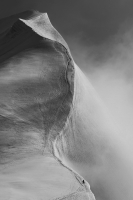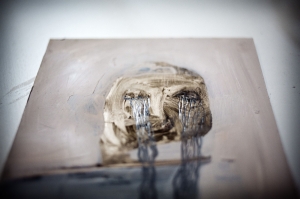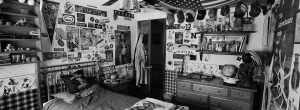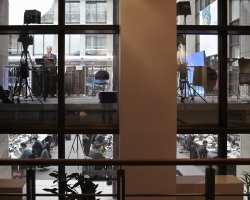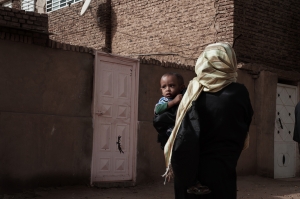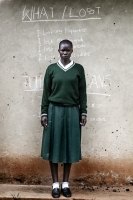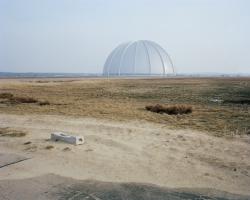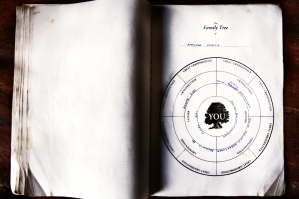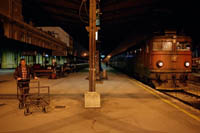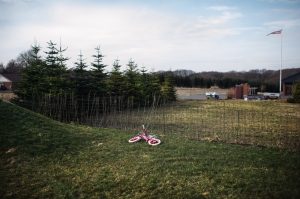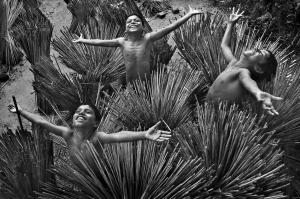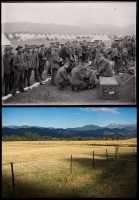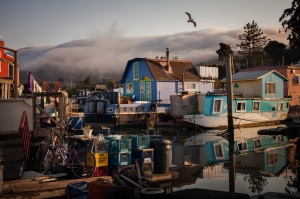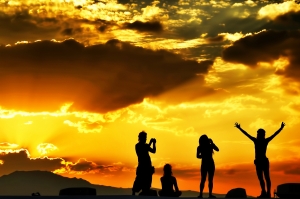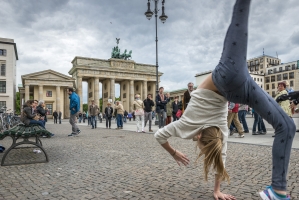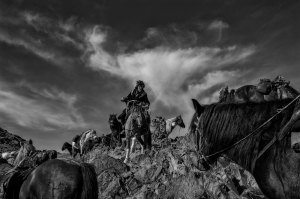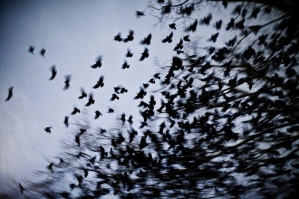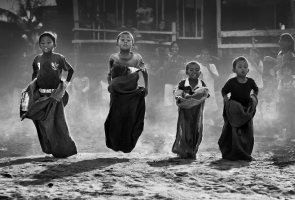The Shortlist of the Alfred Fried Photography Award 2015
Sub-Categories
-
 The Alfred Fried Photography Award 2015 received 5271 submissions with a stunning total of 14115 images!
The Alfred Fried Photography Award 2015 received 5271 submissions with a stunning total of 14115 images!
-
In the first step the international jury created a shortlist of 23 entries (stories as well as single images).
In the jury meeting at the Austrian Parliament on Friday, 19 June 2015, the jurors discussed which five shortlisted entries will be awarded the Alfred Fried Photography Award Medail. And finally, out of this five winners the overall winning image that will be named "World's Best Picture on the Theme of Peace" was defined. The winning image will be on display for one year at the Austrian Parliament and will be included in the permanent art collection of the Austrian Parliament. The winner will receive € 10.000.
The five winners were immediately informed by phone or e-mail and invited to travel to Vienna to attend the Alfred Fried Photography Award 2015 ceremony on 17 September 2015, when Nobel Peace Prize laureate Kailash Satyarthi will give the keynote speech.
The winning images will be publicly announced on 17 September 2015.
The shortlist is in alphabetical order.
Click on an image to see the complete story.
-
 Nataliya Andrianova, Russia
Nataliya Andrianova, Russia
-
About a Little Man
About a little man, about his great way and the heavy search for the peace within himself.... The series includes the photographs ‘Thus the day began’, ‘The tenth wave’, ‘And the clouds envied’, ‘About a little man’, ‘To draw the line’...
-
 Susana Giron, Spain
Susana Giron, Spain
-
Art Against War
Hundreds of thousands of Syrians are refugees in Beirut (Lebanon), among them a small community of young artists. In wartime there is no chance to make art, just looking to survive. ART RESIDENCE ALEY is a place for hope and creativity, an amazing and positive project launched by the Syrian civil engineer Raghad Mardini, who came to Lebanon in 2008, before the Syrian war was started. This residence, built on the ruins of an old stable for horses destroyed in the Lebanon war, hosts two Syrian artists every month, who have escaped from the war in their country and gone to Lebanon. Most of them cannot return to Syria for the risk of being recruited for the army and forced to fight.
For one month they can stay at the ART RESIDENCE ALEY for free. Raghad Mardini supports this initiative by herself. She provides accommodation there, food, enough money to cover all their expenses and especially all the materials to make art during their time there. This is a place to rest and create in peace, to feel safe and scape the pressures of war, a quiet place, 15 km away from chaotic and noisy Beirut and 150 km from Damascus, surrounded by trees, a comfortable, friendly and quiet atmosphere. Without too much to worry about, the mind and spirit is focused on creating art, as well as giving a testimony of their vision and feelings about the war. Once they leave the residence, they must donate a work to the residence. Since the opening at the beginning of 2012, almost 30 artists have stayed here. 30 points of view about the war represented through paintings, sculptures and performances. 30 ways to show their suffering and worries. 30 voices against the war through art. Art Residence Aley means a chance to make art instead of war, a chance to change the destiny, to bequeath a cultural legacy that shows the suffering of the Syrian people. A chance to believe that art can survive even in hard times of war. For one month these artists feel as they are: as artists.
-
 Ashley Gilbertson, USA
Ashley Gilbertson, USA
-
Bedrooms of the Fallen
For more than a decade, the United States has been fighting wars so far from the public eye as to risk being forgotten, the struggles and sacrifices of its volunteer soldiers almost ignored. Photographer and writer Ashley Gilbertson has been working to prevent that. His dramatic photographs of the Iraq war for the New York Times and his book Whiskey Tango Foxtrot took readers into the mayhem of Baghdad, Ramadi, Samarra, and Fallujah. But with Bedrooms of the Fallen, Gilbertson reminds us that the wars in Afghanistan and Iraq have also reached deep into homes far from the noise of battle, down quiet streets and country roads—the homes of family and friends who bear their grief out of view.
The book’s wide-format black-and-white images depict the bedrooms of forty fallen soldiers—the equivalent of a single platoon—from the United States, Canada, and several European nations. Left intact by families of the deceased, the bedrooms are a heartbreaking reminder of lives cut short: we see high school diplomas and pictures from prom, sports medals and souvenirs, and markers of the idealism that carried them to war, like images of the Twin Towers and Osama Bin Laden. A moving essay by Gilbertson describes his encounters with the families who preserve these private memorials to their loved ones, and shares what he has learned from them about war and loss.
Bedrooms of the Fallen is a book reckoning with the human cost of war.
-
 Joerg Glaescher, Germany
Joerg Glaescher, Germany
-
ECHOLAND, Wrestling with Europe
There is an echo in Europe. Essentially there are many echoes. At the moment they do fall silent, but they will never vanish completely. It is the sound from the battlefields, the millions of dead individuals, countless bombs and grenades.
The echoes do not want to pass away.
It appears that the Great Wars, les Grande Guerres, die Großen Kriege, are gone. The massacres at Verdun, Stalingrad and the Seelow Heights, the arming of the Cold War and the replacement wars around the globe. But from time to time, the echoes of destruction and death return to Europe, to Hungary, to Bosnia and the Kosovo. A hundred years after the First World War, they are looking for a new playground, they are returning to the EU borders in Greece and to the beaches of Lampedusa, to the refugee camps in Calais. The echoes of wrestling about Europe do not vanish. Under immense pain, Europe has found its way from bloody nationalism to collective action.
You can listen to the echoes even in the European Parliament. It is a place where people are wrestling with Europe. Quasi the Clausewitz postulate turned around, “Diplomacy is the continuation of war with different instruments.” The members of parliament wrestle about ideas, sentences, commas, about building coalitions. It is still a long journey. And on each step of this journey you will hear the echoes which run like a thread through Europe, and they endanger the peace. The wrestling is still going on, in the landscape, in the parliament. It’s far from over.
ECHOLAND.
During his work on the Echoland project, Glaescher spent a lot of time in the European Parliament in Brussels and Strasbourg. For the second series, he travelled to places where one can still see the wrestling about Europe in the landscape. From the battlefields of Verdun, via the Wolfsschanze in Poland and the graveyards of Srebrenica.
-
 Giulio Piscitelli, Italy
Giulio Piscitelli, Italy
-
From There to Here
Immigration into Europe by people from different corners of the world is a phenomenon that has increased more and more over the last 30 years. What is the current status of the management of migration flows in Europe? What strategies have been implemented to manage - and often to oppose - the phenomenon? What are the results?
Europe has the important task of welcoming those who are looking for a safe place to live in: the old continent is surrounded by wars and socio-political upheavals, which are partly the result of wrong Western policies.
The increase in migration flows has not gone hand in hand with the development of policies for managing this phenomenon. As a matter of fact, in recent years, the EU has often responded by intensifying border controls, detention and expulsion of immigrants.
European borders (and European countries too) are filled with refugee camps inhabited by thousands of people waiting to hear about their future; thousands of human beings who have often suffered unprecedented violence as they were trying to reach the European continent. The management of migration flows is often regulated by laws that ignore the reality of the areas where migrants arrive; as the Dublin Regulation, which prevents the lawful movement of those people on the European territory, thus increasing the business of criminal groups, who profit from smuggling migrants, especially in transit and first reception countries.
In the last four years, the work of documenting this crisis covers most of the countries affected by this phenomenon; in particular those representing the doors of Europe, such as Italy, Greece, Spain; but also the nations that are passage territories for people looking for a better life, such as Libya, Tunisia, Egypt, Sudan, Serbia and Bulgaria.
-
 AnHua Collective, Spain
AnHua Collective, Spain
-
Future Plans
Future Plans is a project with men, women and children forced to be child soldiers of the LRA (Lord's Resistance Army, an armed extremist group). A conflict that ravaged northern Uganda and southern Sudan from 1986 until 2005, when the LRA was shifted to the Democratic Republic of Congo.
The brutality of the LRA against civilians is the reality of all children, now adults, some with sons and daughters. When, after years of captivity, they return to their land or their families, they are often rejected by their own families or their neighbours, fearful that the LRA army is going to abduct them in the village again or because they think they are crazy. In other cases they do not have family because the family was killed when their village was attacked and they were abducted. Almost 2 million people were displaced from their homes and forced to live in refugee camps.
The problem of child soldiers and the biggest problem, their reintegration, is still far from resolved in the world, but is a necessary condition for achieving true peace after a war. We all know the traumas that many of the soldiers returning from a war have. Their problems with adapting to the family environment and their psychological problems. What happens if you add that you've lost your family and you have nowhere to go back to? You were kidnapped at the age of nine and the last ten or fifteen years of your life you were forced to live in the jungle or desert. Fighting, forced to kill or die, uneducated, used as sex slave and psychologically destroyed. They need a chance, a new life, start from scratch.
Through these portraits these children, women and their children are presented. Behind them is a wall with a list of all the things they lost during their years of captivity and, the most important, the list of their hopes, their plans for the future.
In some cases these future plans are already being met, in other cases they are difficult to meet but they maintain the hope, a hope that keeps them alive, after returning from captivity in the worst conditions and eager to continue fighting every day to regain some of its past and build a future. A future where peace is the first priority, a peace that is built with the hope of these ex-child soldiers, peace and hope they represent with their lives and their future.
Imagine that your life is a blank wall. Imagine you have a chalk to write. And you have a new opportunity to write your future. What would you write on it?
-
 Isabel Kiesewetter, Germany
Isabel Kiesewetter, Germany
-
Conversion
With the collapse of the Soviet Union and the end of the Cold War the largest military disarmament in history began. Of the world-wide closures Germany is the most affected.
1994. A look at Brandenburg.
‘Wjunsdorf’, as the place was called by the Russians, is the seat of the Supreme Command of the Soviet Armed Forces in Germany. Within a fenced and walled enclosure are numerous Soviet facilities, such as kindergartens, schools and shops. The former headquarters of the Supreme Command of the German Wehrmacht is now home to - at its peak - 50,000 to 75,000 Soviet men, women and children. The withdrawal of the troops in 1994 leaves behind an entire deserted town.
Wünsdorf is just one example of many abandoned military sites in East and West Germany.
Military sites in very poor condition and hazardously contaminated remain.
The transformation of former military facilities for civilian use for communities therefore poses considerable challenges. A new use has to be found for areas that have often been ignored in urban planning. Financing the conversion causes considerable problems to the communities and the withdrawal of troops in Germany is accompanied by the loss of 129 000 jobs.
The conversion process begins ...
2011. A look at Brandenburg
Bushes and shrubs conquer soil contaminated with ammunition, a spaceship-like building is found in a desert scenery - the conversion of former military sites is creating surreal landscapes in Germany. About 20 years after the withdrawal of the Allied Forces, the conversion of some areas has already been completed, in others it has not even begun. In these nature is taking possession of the military remains. The examination of the current character and use of these military areas allows a differentiated view of this long-term conversion process in Germany.
-
 David Rengel, Spain
David Rengel, Spain
-
Memory Book
NACWOLA is the only Ugandan NGO ruled only by women with HIV. Nowadays it helps more than 150 000 women and orphans with microcredits and psycho-social projects such as Memory Books. A Memory Book is a legacy made of photos and memories about relatives lost because of HIV, created to fight against the rootlessness.
A Memory Book is a family album made of photos, drawings and any personal information, which women from NACWOLA want their children to know about life and death but, above all, a Memory Book is the legacy left by Ugandan women with HIV who, 20 years ago, decided to fight against the illness and the rootlessness it causes, taking care of their sons and daughters even after their death.
In Uganda, by the beginning of the 1990s, corpses kept piling up in the morgues and nobody knew what was going on. During the days when it seemed like hope had escaped that land, a few HIV-positive women decided to bring it back, not for them, but for their children. That is how NACWOLA (National Community of Women Living with HIV/AIDS) was born, during the International Conference on AIDS held in Amsterdam in 1992. The three founding members died of AIDS in the following years, but their legacy was a ray of light in the darkest days. With the help of European health and psychology professionals, the decided to put in writing what they would never be able to tell their children, and they created the Memory Books. These books are their recollections, they tell us about them and the future they want for their children on pages full of words of care and affection. They are motherhood guides from beyond, survival tutorials for lost children, since over 12% of Sub-Saharan under-age population will lose at least one of their parents in the next 12 months, and they will be on their own. As Gladys, the person in charge of the Memory Books project in Luwero, in the centre of the country, tell us: “They are each special and very personal, in spite of following a common pattern that includes family photos, memories and a family tree. With these books we encourage parents to listen to their children, to talk to them frankly about their disease.”
The project is like a big family, with members helping each other emotionally and financially in their daily struggle for survival. Mothers, orphans and grandmothers, many of them displaced by the internal war with the LRA (Lord’s Resistance Army). In a country where 35% of the population is HIV-positive, where there are two million orphans, a country in which polygamy and dowry are common practice, these women are struggling against the AIDS stigma and are not afraid of anything. NACWOLA and the project have given them back hope.
-
 Janine Graubaum, Germany
Janine Graubaum, Germany
-
On the Track of Eastern Europe Trains
They are old, they smell and sometimes they shake so heavily that one gets bruised when standing. Their charm seems to have faded and their curtains flap tiredly in the wind. Often they are the last survivors of Soviet times and not much more than a nuisance to the locals. “The bus will be faster”, I will be told many times.
Once having taken your seat, you can suddenly breathe freely and feel relaxed in those stifling waggons. Time stands still for a very long moment. Gently rocking, they carry you and your thoughts to distant destinations. And if you watch closely enough, small parallel universes will unfold within the waggons tight bellies.
In 2013 and 2014, I repeatedly went on journeys in Eastern Europe to look out for special moments within old Soviet Union trains and their surroundings. Most of the old trains I found in Ukraine. During my journeys I discussed with many locals what was going on politically in the country. The trains not only show you war in Ukraine but also the real lives of local people and let you explore colourful humanity.
-
 Mario Wezel, Germany
Mario Wezel, Germany
-
One in Eight Hundred
After the implementation of pre-natal screenings across all of Denmark in 2004, the number of newborns with Down syndrome dropped dramatically. Between 2000 and 2004 around 60 children were born with the chromosomal disease each year, but in 2006 only 31 were born. More than 95% of all Danish parents-to-be decide to have an abortion if they find out that they carry a baby with trisomy 21 - a drastic change of the social landscape.
Emmy is five years old and has Down syndrome. With her parents Martin and Karina and her younger brother Kristian, she lives in the countryside in the middle of Denmark. She has attended the local kindergarten for a year now and is about to have her first day of school at a public inclusive school, 30 kilometres away from home. Her parents had to fight the municipality to find the right place for Emmy.
Karina and Martin were given a low risk of 1:800 at their screening. “Emmy just happened to be the one”, they say today. The cut-off is set at 1:300, meaning that for such probability invasive measures are recommended by doctors. Only the invasive test can give a clear answer about the health of the foetus.
Today the small family has managed to create a home full of life and warmth, even though, in the first months after Emmy was born, they were in shock and had to align their expectations. They had to rethink their ideas of what is normal or perfect.
The world in their everyday life turns a little bit more slowly as Emmy just takes her time with many things. They are aware of that but seem to have arranged themselves with it just fine. It is not sure how the issue will develop in Denmark through the next years. For me that development is a sign of our pursuit of perfection. We don’t feel comfortable about bumps in the road and need to plan and know everything in advance. The story of Emmy and her family shows how much you can gain if you let life surprise yourself from time to time.
-
 Dipak Kumar Dey, India
Dipak Kumar Dey, India
-
Peaceful Village Life
The soul of a country lives in its villages, the villages are free from the hustle and bustle of a city life, villages are peaceful, calm, quiet and full of greenery where one can breathe fresh air. People’s lives here are innocent, mostly children. They live their life full of peace and joy.
Early childhood years play a critical role in the definition of the child’s emotional expression and regulation, psycho-social and cognitive development, cultural norms, identities and prejudices in terms of a child’s behaviour towards others. What all this sums up to is a word of complete PEACE.
-
 Gebhard Krewitt, New Zealand
Gebhard Krewitt, New Zealand
-
Re:enactment
The 1st World War is the national trauma of the people of New Zealand and the centenary of the beginning of WW1 was commemorated all over New Zealand. For my project Re:enactment I searched through the Nelson Provincial Museum’s photographic collection and selected 50 images that were in good condition, had interesting subject matter and connect the region to WW1.
The Nelson Provincial Museum‘s photographic collection is an extensive record of Nelson region‘s social history and development, spanning the entire period from the 1860s to the present day. The collection forms a unique and detailed continuous documentation of the region.
With photocopies of these images in my hands I wandered through Nelson and the immediate environment and tried to find the exact spot where a historical photograph had been taken 100 years ago. Once located, I recreated the same frame by shooting the image in similar light conditions, or focusing on a contemporary event being held in the same place. The majority of the images are diptychs: a historical image paired with my digital photograph. Other project images are a blend – where historical elements, like tents, horses and men, appear in black and white and the surrounding countryside in digital colours.
Re:enactment provides the opportunity to explore these historical pictures and rediscover where in the region the places are. This in turn adds new values to these images from 100 years ago. I am connecting the past to the present.
My selection of historical photographs were photographed by Frederick Nelson Jones. Frederick Nelson Jones, called Pompy, was born in Nelson on 4 May 1881 and died in Nelson on 29 August 1962.
-
 Nicole Strasser, Germany
Nicole Strasser, Germany
-
Sausalito houseboats
“Early in the morning the mist crawls over the hills like a lost dream. Seagulls call, herons pick around in the mud, and between two jetties a sea lion blinks into the first ray of the Californian sun, which will make everything glow as from inside. Strolling through the Gates Co-op you feel as if you were in a painting by Hieronymus Bosch invaded by a horde of cheerful children. Here people have a birthday party, even if it isn’t anyone’s birthday, dispel bad spirits the American Indian way with smoke of sage, make contact with extra-terrestrials using gadgets with names as mysterious as their functions. Everybody is an artist and no one a critic, and the goal in life is always where life happens to take you at the moment. ...” Peter Haffner
-
 Andrew Wyatt, USA
Andrew Wyatt, USA
-
Somewhere Over the Rainbow
The year was 2002. I had recently earned a Master of Theology degree and preached the Good Book as a Southern Baptist preacher for a few years. But questions gnawed at my mind like wild mice. I also was grappling with a failed romance. Twin losses (spiritual and romantic) propelled me to yield to a friend's persistence to attend this crazy festival called Burning Man, located in the Black Rock Desert of northern Nevada. Peering through the cracked rear view mirror of my mind‚ I can now recall the moment my brain first eggshell-cracked and splattered over all my previously held beliefs about the universe onto the alkali desert floor.
The truth is I never knew the moment when change happened to me. I just felt the effect later, like the hard thwack of a rubber band against the heart, or a piano dropped from the top floor of my soul to the pavement below. That is, until that first night in the desert. I was introduced to a world of creative, open-minded people who gave freely of their resources and their hearts. Money was not accepted. People gave gifts of food, art and clothing to one another. I had never lived among people who didn't judge one another based on appearance or status. I was pressed into an encounter with the Other – the Unknown‚ forcing me to become myself; forcing me to be present.
Somewhere in that experience, somewhere over that rainbow of a loving community, I ceased living in a black-and-white world and, like Frank L. Baum's Dorothy, I stepped into a Technicolor universe like Oz. Suddenly my world and my universe became a lot larger than I ever realized. That brief moment‚ lasting not much longer than a lightning flash, struck me and I could not go back to being the person I was before. I stopped preaching the Gospel, because I needed to learn to love – in the way that the men, women, and children showed me. I became a festival photographer in the hopes that I could show others the peace and joy these people demonstrated to me.
Now, peering through that cracked rear view mirror of my mind‚ I assemble a short photo essay that expresses the hope, joy and love that all communities can one day have.
-
 Gerhard Westrich, Germany
Gerhard Westrich, Germany
-
The Berlin Wall Strip Today
It has been more than 25 years since the Berlin Wall fell. The traces of the transition, the interplay of change and memory along the path of the Berlin Wall, which divided the city for 28 years and cost the lives of so many people, is the topic of this work. The combination of famous places and unfamiliar areas generates an arc of suspense connected with the central theme of the former death zone.
There are official places of remembrance, such as the Berlin Wall Memorial (Bernauer Straße), Checkpoint Charlie and Eastside Gallery. Or private initiatives like the watchtower at Kieler Eck, which Jürgen Litfin has turned into a site to commemorate his brother, who was the first victim of the shoot-to-kill order of the German Democratic Republic.
In the meantime most of this one-time border and death strip have become invisible. It has been transformed and developed to be part of a new urban and political reality. Nonetheless it also remains a space which has changed so many people´s lives and is inscribed with so memories. In this sense it is a hybrid space.
The thousands of Japanese cherry trees, which have planted along part of the death strip, are just a wonderful example of how the past can be transformed into a recreational space where people can meet, walk and enjoy themselves. The new homes and green spaces, in which families live and children can play, reiterate this point, too, that no wall or border dividing people can stand for ever. This is what I wanted to show.
My photos are an attempt to capture a sense of what this significant piece of world history actually means and to encourage people to explore this historically vibrant space where the Berlin Wall once stood.
-
 Palani Mohan, Hong Kong
Palani Mohan, Hong Kong
-
The Kazakhs of Mongolia
…the open spaces, the big skies, the grasslands, the wind, the mountains, the clouds, the golden eagles and their songs. These are their words for peace ."
In the remote region which borders Russia, Kazakhstan, Mongolia and China live the last remaining men who hunt with eagles. For centuries Kazakh nomads have roamed the steppe since the days of Genghis Khan. Their ability to hunt with eagles was remarked upon by Marco Polo. The advance of the Russian empire into Kazakhstan two centuries ago swelled their ranks and, when the modern borders were drawn, the Kazakhs found themselves cut off from their homeland and left with little choice but to settle on the arid, wind-scoured plains and foothills of the Altai mountain range of western Mongolia. The golden eagle is a perfect predator, capable of killing a wolf, with a wingspan reaching two metres, beaks built to rend flesh and talons that kill prey instantly by piercing the heart. They look noble, distinguished, just like their masters. And their eyesight is amazing, exponentially better than a human’s, and they seem to burn with a real intelligence and ferocity.
“The golden eagle is like no other bird,’’ one hunter told me . “They want to be with you. They love you. And they love to kill for you. When the time comes to let them go, it’s the hardest thing a man can ever do.’’
I have spent five years working on this story. Returning to their lands from my home in Hong Kong. It is for me the most peaceful place on earth. Far away from the troubles of our world. When you talk to the men and ask them what they like about their home, they will tell you they love the open spaces, the big skies, the grasslands, the wind, the clouds, the golden eagles and their songs. These are their words for peace.
-
 Michael Heck, Germany
Michael Heck, Germany
-
Tolstoi
There is a town in Estonia with a street named after a famous writer. There is an old green wooden house, weather-worn by cold winters, with a veranda and decorated windows. In recent decades, situated between all the other rickety-looking houses and wooden sheds in Karlova, a former working class neighbourhood of Tartu, it has been home to young students and creative types, layabouts and loners.
Sometimes 16 people are living here. Sometimes more. Sometimes less. A rare lifestyle in Estonia and for many of them just a brief station. Almost no one lives here for more than a few years before carrying on, dreams want to be lived, aims reached, always there will be this moment, when even the most professional slacker can’t stand it anymore. There is no residents' committee and the garbage is not separated for recycling. Community is not planned - it just happens.
After half a century as part of the Soviet Union and the reclaimed Estonian independence in 1991, the young generation grows up among the Soviet legacy and a society affected by Western European values.
While the economy is booming and many European states look with envy at the comparatively tiny debt of the country, the euro introduced and little Estonia, with its image as the high-tech, enthusiastic Baltic Tiger, becomes a politicized role model, the wages and opportunities for job training still remain low. Many young Estonians go abroad, so many that the problem of migration is perceived as a serious threat to the future development of societies.
Tolstoi is a place where all this is hardly talked about. It is as if you would ignore all that and people try to create their own modest but smoothly going universe. But still - I wonder if there suddenly are different ideals and visions of a fulfilled life for some young people in Europe, in which money is important – but wealth takes on a different meaning.
-
 Alamsyah Rauf, Indonesia
Alamsyah Rauf, Indonesia
-
Traditional Independence Day Games
Every August 17, there is something unique and entrenched for the Indonesian nation in celebrating its independence, namely the presence of festivals in the form of competitions that have become a culture in their own right for the Indonesian nation. Decorated by festive celebration of freedom and laughter of people who participated in these competitions is sack race, cow race, palm tree climbing contest (lomba panjat pinang), and mappallebu (circle for togetherness).
